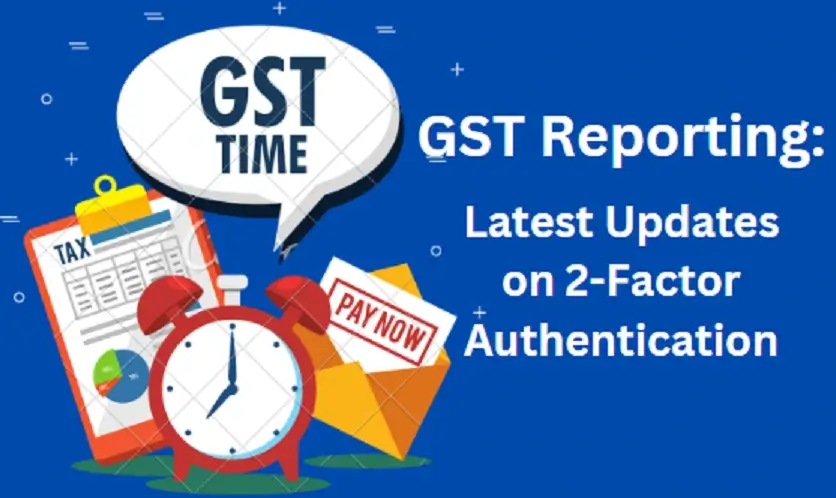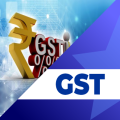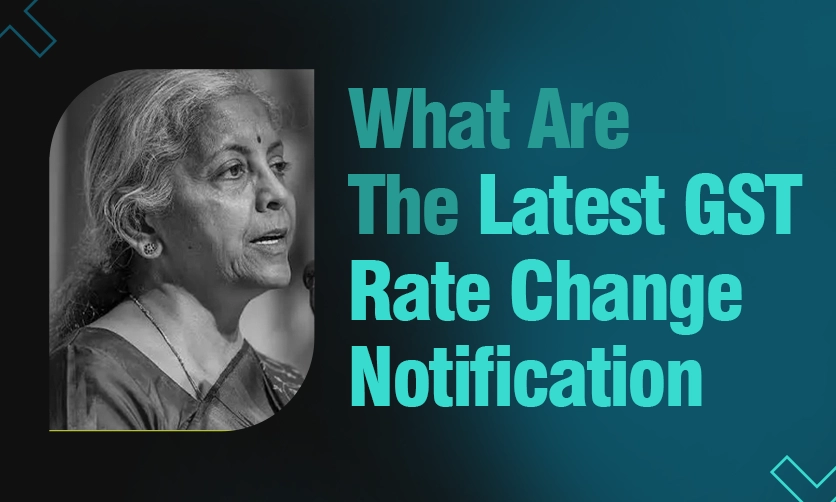
2-Factor Authentication in GST – A Complete Overview on GST Reporting
The GST Authority has recently introduced new rules for GST reporting and authenticating invoices on the IRP portal. These changes are part of a plan to streamline the GST system and make it more secure. In this blog we will cover process on 2-Factor Authentication in GST.
One of the key changes is a new time limit for reporting invoices on the IRP portal. Taxpayers with an annual turnover of 100 crores or more must now report invoices within 30 days of the invoice date. This rule applies to all types of documents, including credit and debit notes, for which Invoice Reference Numbers (IRNs) are generated.
There are a few more updates on GST reporting and GST 2-factor authentication. We will discuss each one in detail with its importance and procedure.
Table of Contents
New Update: Time limit Changes for Reporting Invoices on the IRP Portal
Businesses in India with an annual turnover of 100 crores or more must now report their invoices to the GST Authority within 30 days of the invoice date. This new GST reporting rule takes effect on November 1, 2023.
This rule is important because it helps to ensure that GST data is accurate and timely. This makes it easier for businesses to comply with GST regulations and for the government to track GST revenue.
| The GST Authority has decided that businesses in India with an annual turnover of 100 crores or more must report their invoices within 30 days of the invoice date. |
| This means that businesses in this category will not be allowed to report invoices that are older than 30 days. |
| This restriction will apply to the document types including Credit / Debit notes for which IRNs are to be generated. For example, if an invoice has a date of 01.11.2023, it cannot be reported after 30.11.2023. |
| This new rule will take effect on 1st Nov,2023. |
This is the first new update on the GST portal every business that comes under this has to check the new GST reporting regulations. If you want to update yourself with these rules or any GST concepts then explore the GST courses designed by ICA experts.
How can businesses get ready for these changes?
Businesses should review their current invoice reporting procedures and make sure that they comply with the new rules. Businesses may need to update their software systems or implement new manual procedures to ensure that invoices are reported on time.
Overall, the new GST invoice reporting rules are a positive step towards making the GST system more efficient and secure. Businesses should take the time to understand the new rules and make sure that they comply.
If you are interested in learning more about GST then read these articles
Types of GST in India
GST Return Types
GST Basic Concepts for Students
Reverse Charge Mechanism: Key Concepts and Implications
The next one is the GST 2-factor authentication for a more secure GST portal.
Mandatory 2-Factor Authentication in GST
GST e-invoice portal has informed that 2 Factor Authentication (2FA) for all taxpayers with AATO above Rs 20 Cr is mandatory from 1st Nov 2023
“GST 2 Factor Authorisation” in GST E-way Bill and E-invoicing

New 2FA requirement for GST e-invoice portal
The GST e-invoice portal is implementing a mandatory two-factor authentication (2FA) process for all taxpayers with an annual aggregate turnover (AATO) exceeding Rs 20 crores. This means that, in addition to their username and password, users will also need to provide a one-time password (OTP) to log in to the portal. This security measure aims to strengthen authentication procedures and protect sensitive taxpayer data.
The 2-factor authentication in the GST requirement becomes mandatory from November 1, 2023. It applies to all eligible taxpayers and remains optional for others.
- The National Informatics Centre (NIC) has introduced 2-factor Authentication in GST to log in to the e-way bill or e-invoice system. Besides username and password, the user would now be required to provide a one-time password (OTP) for authenticating the login
- It is mandatory from 01.11.2023 for those taxpayers whose turnover (AATO) is greater than Rs.20 crores. [AATO means Aggregate Annual Turn Over]
- It is optional for others whose AATO is up to Rs.20 crores.
Manage Multiple GST in TallyPrime Release 3.0 – A Step-by-Step Guide
GST Reconciliation in TallyPrime: A Comprehensive Guide with Real-Life Examples
Simplifying Accounting: E-Invoice in Tally Prime
2-factor authentication Process
To complete the process of 2-factor authentication in GST, you have to generate the OTP. One-time passwords (OTP) can be received in 3 ways
- SMS: OTP is shared with the taxpayer on the registered mobile number as SMS.
- Sandes App (by Govt. of India): Taxpayers can download and install this app with their registered mobile number and can receive a one-time password for it.
- NIC GST Shield App: NIC-GST-Shield is a mobile application provided by the e-invoice System/e-way Bill system so that OTP can be generated using this app.
Mandatory HSN in E-invoice
The Harmonized System of Nomenclature (HSN) code is a standardized system for classifying goods. In India, taxpayers with an annual aggregate turnover (AATO) exceeding Rs 5 crore will be required to use valid 6 or 8-digit HSN codes in their e-invoices and e-way bills from October 1, 2023. For all other taxpayers, a minimum of 4-digit HSN codes will be mandated.
This change is being implemented to improve the accuracy and consistency of GST data. It will also make it easier for businesses to comply with GST regulations and for the government to track GST revenue.
As per Notification No. 78/2020 dated 15th Oct 2020, taxpayers having AATO above Rs 5 Crore shall use valid 6 or 8-digit HSN codes in e-Invoices and e-Waybills . Other taxpayers shall use at least 4-digit HSN codes in E-Invoices and E-Way Bills. This will be made mandatory from 1st October 2023 in e-Waybill and e-Invoice Systems.
Key Takeaways
The recent GST reporting changes to the GST system in India are important for businesses because they make the GST system more efficient and secure. Businesses need to review and update their reporting procedures and software systems to make sure they comply with the new rules. Following the new rules will make it easier for businesses to operate and will help to make the GST system stronger.
If you are interested in learning complete GST under expert guidance and want to stay updated with the GST then explore the GST Course. It will help you a lot to clear your key concepts and make you a GST expert.
- Top 20 Journal Entries Questions And Answers For Interview - November 8, 2024
- Accounts Payable Process in SAP: Step by Step Guide - August 23, 2024
- Capital and Revenue Transactions: Understand the Basics - August 16, 2024

.jpg)



















